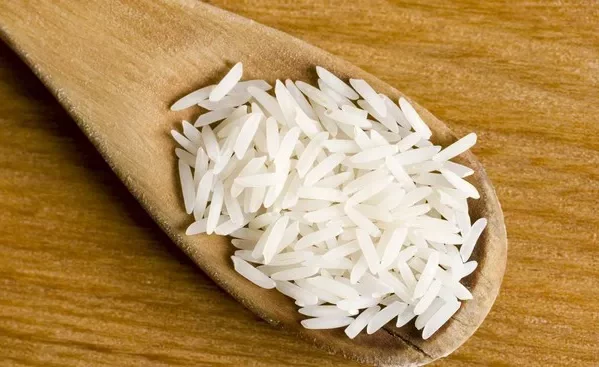Hey there, foodies and health-conscious folks alike! Today, we’re diving into the wonderful world of rice – a staple ingredient in cuisines around the globe – and exploring which varieties are the cream of the crop for those of us managing diabetes. So grab a seat, and let’s dig in!
Introduction: Rice, the Grainy Goodness
Rice – it’s a pantry staple that’s been gracing dinner tables for centuries. Whether it’s paired with savory stir-fries, simmered into comforting soups, or served alongside spicy curries, rice is a versatile grain that knows how to steal the show.
But for individuals with diabetes, choosing the right rice can be a bit tricky. Worry not, my friends, because I’m here to guide you through the rice aisle and help you find the perfect grains to keep your blood sugar levels in check.
Types of Rice: Exploring the Grain Spectrum
Let’s kick things off by taking a closer look at the main players in the rice game:
1. White Rice:
The classic. White rice is polished to remove the bran and germ, resulting in a fluffy texture and mild flavor that pairs well with just about anything.
However, it’s important to note that white rice has a higher glycemic index (GI) compared to other varieties, meaning it can cause quicker spikes in blood sugar levels – not exactly ideal for those of us watching our glucose levels.
2. Brown Rice:
Enter the hero of the rice world – brown rice! Unlike its white counterpart, brown rice retains the bran and germ, giving it a nutty flavor and chewy texture.
Plus, it’s packed with fiber, vitamins, and minerals, making it a stellar choice for people with diabetes. With its lower GI and higher nutritional value, brown rice is a no-brainer for those looking to support stable blood sugar levels.
3. Wild Rice:
Now, let’s talk about the dark horse of the rice family – wild rice. Technically not even rice (it’s actually a type of grass), wild rice boasts a rich, earthy flavor and chewy texture that adds depth to any dish.
While it may not be as widely available as white or brown rice, its lower GI and higher fiber content make it a worthy contender for individuals with diabetes looking to spice up their meals.
Health Considerations: Rice and Blood Sugar Management
Alright, now that we’ve covered the basics, let’s get into the nitty-gritty of how different types of rice can impact blood sugar levels:
1. Glycemic Index and Load:
Here’s the deal – the glycemic index (GI) measures how quickly a carbohydrate-containing food raises blood sugar levels. Foods with a high GI are digested and absorbed rapidly, causing a sharp spike in blood sugar. On the other hand, foods with a low GI are digested and absorbed more slowly, resulting in a gradual rise in blood sugar levels.
When it comes to rice, white rice typically has a higher GI compared to brown or wild rice, making it less than ideal for individuals with diabetes.
2. Nutritional Content:
Beyond just GI, it’s essential to consider the overall nutritional profile of rice. While white rice may be lower in fiber and certain nutrients due to the refining process, brown and wild rice shine in this department.
Packed with fiber, vitamins, and minerals, these whole grain options offer more bang for your buck when it comes to supporting overall health and blood sugar management.
Best Rice Options for Diabetics: Choosing Wisely
So, which rice varieties reign supreme for individuals with diabetes? Let’s break it down:
1. Low-GI Rice Varieties:
When it comes to keeping blood sugar levels stable, opting for rice varieties with a lower GI is key.
Brown rice and wild rice fit the bill perfectly, offering a slower release of glucose into the bloodstream compared to white rice.
By incorporating these whole grain options into your meals, you can enjoy the satisfying taste of rice without the worry of rapid blood sugar spikes.
2. Whole Grain Goodness:
In addition to their lower GI, brown and wild rice boast a plethora of health benefits thanks to their whole grain status.
Rich in fiber, vitamins, and minerals, these nutrient-dense grains support digestive health, heart health, and overall well-being – all while helping to keep blood sugar levels in check.
Swap out white rice for brown or wild rice in your favorite recipes, and reap the rewards of these wholesome grains.
Cooking and Preparation Tips: Serving Up Success
Now that you’ve chosen your rice wisely, it’s time to get cooking! Here are a few tips to help you prepare delicious and diabetes-friendly rice dishes:
1. Cooking Methods:
Opt for cooking methods that help minimize the impact of rice on blood sugar levels, such as steaming, boiling, or using a rice cooker.
Avoid frying or adding excessive fats and oils, as these can increase the calorie and carbohydrate content of your rice dishes.
2. Portion Control:
Keep an eye on portion sizes to avoid overindulging in rice, which can lead to spikes in blood sugar levels.
Aim for smaller servings and balance your rice with plenty of vegetables, lean proteins, and healthy fats to create a well-rounded meal that won’t wreak havoc on your glucose levels.
3. Flavor Enhancements:
Get creative with your rice dishes by adding flavor-packed ingredients like herbs, spices, citrus zest, and roasted vegetables.
Experiment with different flavor combinations to keep things interesting and satisfy your taste buds without relying on high-sugar or high-fat toppings.
Potential Health Benefits: The Rice Rewards
But wait, there’s more! Beyond just blood sugar management, incorporating whole grain rice into your diet can offer a slew of additional health benefits:
1. Fiber-Rich Properties:
One of the standout features of brown and wild rice is their high fiber content. Fiber plays a crucial role in regulating blood sugar levels, promoting satiety, and supporting digestive health.
By choosing whole grain rice varieties, you’re not only satisfying your hunger but also nourishing your body with the fiber it needs to thrive.
2. Micronutrient Magnificence:
Brown and wild rice are also rich in essential vitamins and minerals, including B vitamins, magnesium, and manganese. These micronutrients play vital roles in energy metabolism, nerve function, and bone health, among other functions.
By incorporating whole grain rice into your diet, you’re giving your body a nutrient boost that can help support overall well-being and vitality.
Conclusion: Rice, Refined
In conclusion, my fellow rice enthusiasts, choosing the best rice for diabetes doesn’t have to be a daunting task. By opting for whole grain varieties like brown and wild rice, you can enjoy all the flavor and versatility of rice while supporting stable blood sugar levels and overall health.
So go ahead, stock up on those wholesome grains, and get ready to savor the delicious rewards of choosing the best rice for your diabetes-friendly diet. Your taste buds – and your health – will thank you for it!

























